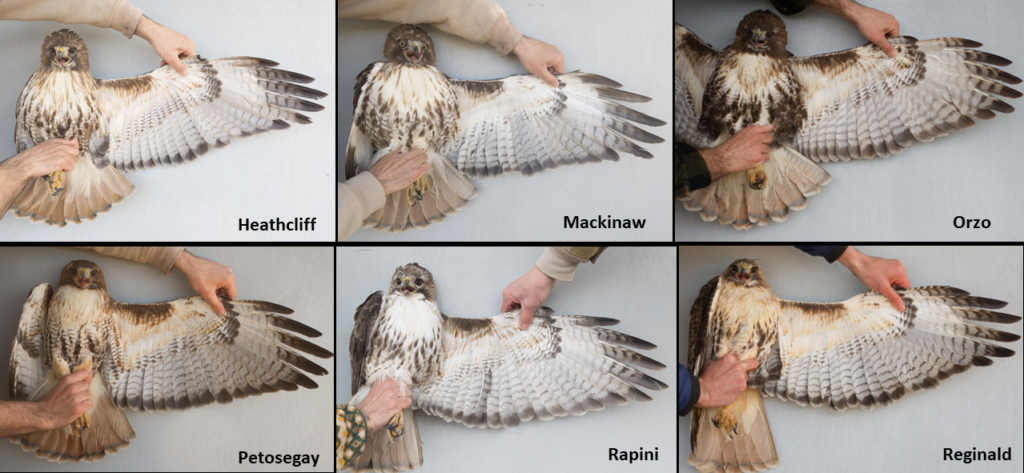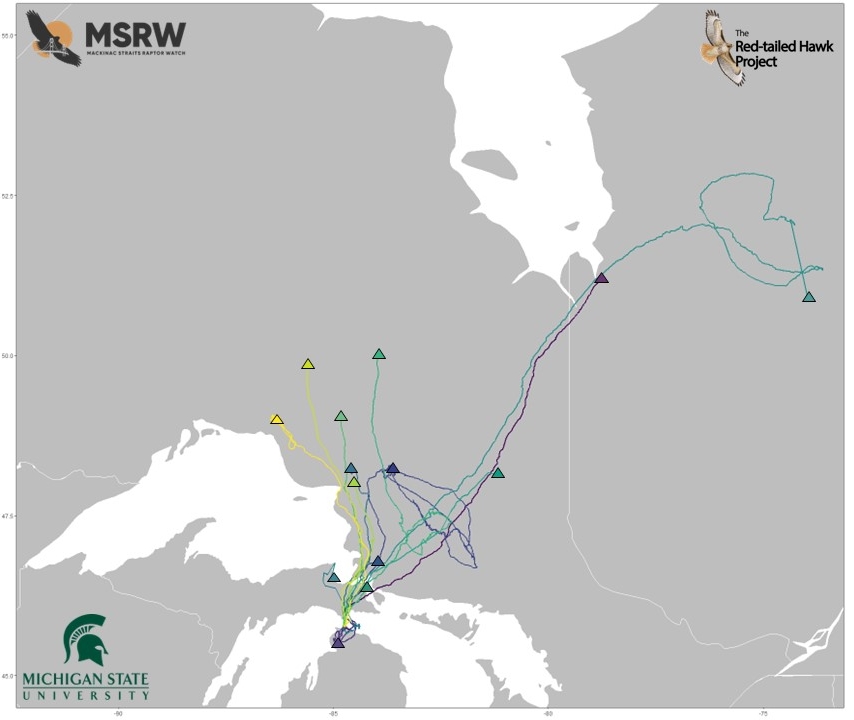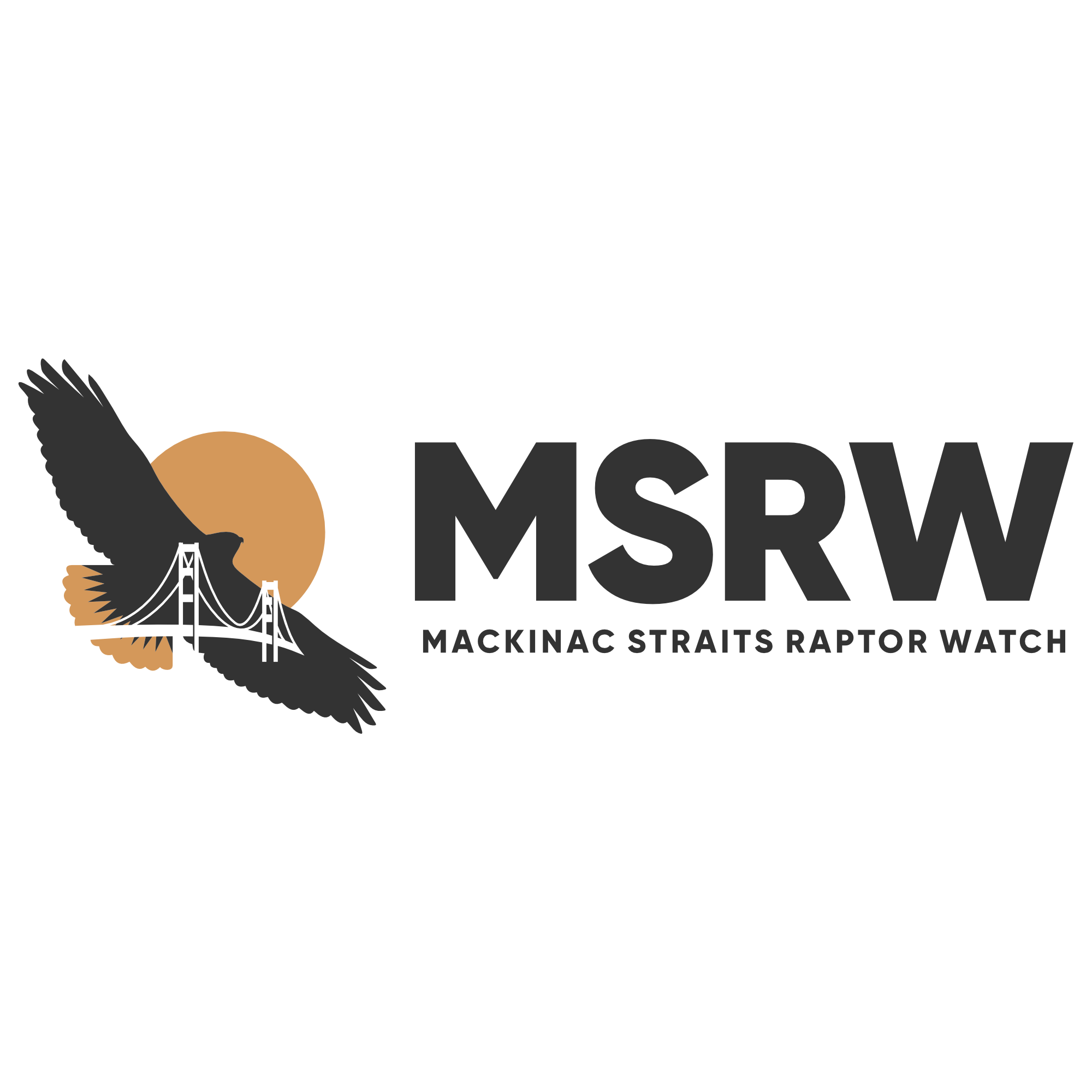Red-tailed Hawk Movement Update
As was the case in 2021, we once again set out to deploy transmitters on adult birds in 2022. One of the reasons for targeting adults is that survival rates among this cohort are the highest. Therefore, we are likely to get more data over a longer period of time, unlike juvenile birds which in comparison have a lower survival rate. Tagging adults also gives us insight into the migratory routes that are consistently used by this population through the Straits region. Red-tails, among other obligate migrants will utilize similar migration paths once they are recruited into the breeding population. This is why we have seen our tagged birds that are confirmed breeders using the same areas/routes, and have shown consistent arrival to their breeding grounds. We will also probably see consistent departures from their wintering grounds in the years to come. Our research is currently focused on adult movement in this area and we are using them as the baseline for collecting data. Nevertheless, tagging juveniles would also raise may questions and perhaps on day we will look into studying their movement in this area too.
Now, without further ado, here are the 15 birds that we tagged this past April and May. I would again like to thank all the generous donors who have made this project possible. Without you we couldn’t conduct such incredible research!



Apart from targeting breeding adults, we also wanted to tag some younger adults to better sample the adult population. What do I mean by this? Well, after their first year, juvenile Red-tailed Hawks will undergo a molt cycle (the annual event of replacing feathers). Upon completion of their first molt, juveniles will have adult plumage but will not yet be part of the breeding population. Thus, superficially they resemble breeders but have not actually been recruited to the breeding portion of the population. These birds are often referred to as 2nd cycle birds, meaning they are in the 2nd cycle of plumage. When having these birds in hand there are various criteria we can look at to help us be confident when assigning an age. These include examining the feathers to look for discernable replacement patterns that can correlate with a specific age, we also look at eye color. Eye color in Red-tails transitions from a pale greyish/yellow as a juvenile to a dark chestnut brown as an adult. In the collage above, both Bucatini and Mackinaw are the first 2nd cycle birds wearing transmitters for us.
We are quite excited to see what these two do this summer. Our assumption is that they probably will not attempt to breed as it is thought that a Red-tail will not breed until its 3rd year. Then again, maybe we will learn something new. Below is a map showing movement of our new group of 15, or the class of ’22 as I like to call them. The data shown spans from the beginning of April until mid-June.
On this map the purple triangle near James Bay is Angell and it appears that she is nesting there. She is also our second confirmed Quebec breeder from this project. GPS data along with morphometric data also suggest to us that she is a female as she has spent a considerable amount of time incubating which is typical behavior of the female. To the left of Angell is a turquoise triangle and that is Mackinaw. Mackinaw so far has travelled the furthest East of any of our tagged birds which is exciting in and of its self, so it will interesting to see what migration route he uses this fall. It also appears based on the data that he has just been wandering around, perhaps trying to find an open territory to settle in. We will have to wait and see if he attempted to breed or not. We also believe Mackinaw to be a male based on the measurements we took. All in all, the new group of birds are already providing a lot of great data and I’m excited to share updates on them with all of you!


